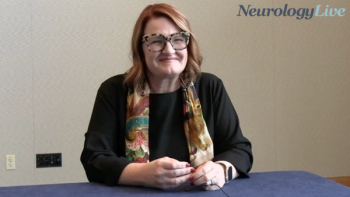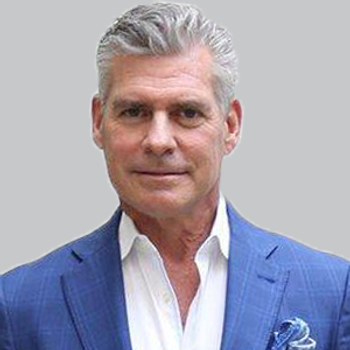
Could Hyperbaric Oxygen Therapy Improve Cognitive Function in Dementia?
The director of the Sagol Center for Hyperbaric Medicine and Research at Yitzhak Shamir Medical Center offers insight into the attempt to regenerate injured tissue in the brain as a way to potentially treat Alzheimer disease and dementia.
Shai Efrati, MD
This is the first of a 2-part interview. For Part 2,
Hyperbaric oxygen therapy, which has been approved by the FDA for many different indications, was only recently studied for cognitive challenges, with data suggesting that it may offer new hope for cognitive decline.
It has previously shown statistically significant improvements in all memory measures and indicate that it can lead to significant neurological improvements in post-stroke patients even at chronic late stages.1,2 Now, new data have implied that it may hold promise for those with diseases like Alzheimer and dementia. A randomized controlled clinical trial of 63 healthy older adults compard placebo to hyperbaric oxygen therapy for 3 months, showing that the oxygen therapy appeared to induce cognitive enhancements via mechanisms involving regional changes in cerebral blood flow, as evaluated by perfusion magnetic resonance imaging (MRI). A significant group-by-time interaction in global cognitive function was observed compared to control (P = .0017), with the most impressive improvements in attention (net effect size = 0.745) and information processing speed (net effect size = 0.788).3
The research was led by Shai Efrati, MD, director, Sagol Center for Hyperbaric Medicine and Research, Yitzhak Shamir Medical Center; and associate professor, Sackler Faculty of Medicine and Sagol School of Neuroscience, Tel Aviv University. To find out more about how the clinical study of this method of treatment got to this point, NeurologyLive inquired with Efrati.
NeurologyLive: Could you walk through what prompted this work? How did we get to this point with hyperbaric oxygen therapy?
Shai Efrati, MD: Actually, it all started something like 15 years ago. I started a small study and the goal was to prove that neurons cannot be regenerated. That's was the goal, and I got the opposite results. Since then, things are moving in a completely different direction.
We are working on regenerating brain tissue. The main issue is to refer to the brain as a tissue. The injury that we have in the brain is just like any other injuries we have in other parts of the body. They have common dominant pathophysiology, whether you want to heal a peripheral wound that you have in the leg, or whether you want to heal a wound that is in your brain. The main difference between the one that we have in the leg and the one in the brain is that the wound in the leg is something that you can see. It's tangible. You can smell it, you can see it, you understand what is happening. With the brain, it's high tech. We are looking at it through CT or MRI. We're speaking about the brain in a mystic fashion, about cognitive personality. But, surprise, surprise—it's a tissue.
First, what we did is evaluate the wound in the brain just like any other peripheral one, meaning we know that there are several degrees of injury. The would can be necrotic, which is completely dead tissue. Unfortunately, for that tissue, we cannot help. But there might be an integral tissue that is not fully dead. We call it metabolic dysfunction tissue in the brain. We call it hibernating, we call it stumbling, but what does it mean? It means that we have an injured tissue that is stuck. It does not heal.
At the beginning, we started with classical cases of brain injury. We started with stroke, traumatic brain injuries and encephalitis, and things like that. The knowledge that we gained from this is that if we can trigger stem cells and we can bring enough energy—enough oxygen to the damaged tissue—then the body can initiate the regenerative process that it is doing in other parts of the body, in the brain. The main issue now, then, is how do we bring the basics that is needed for the wound care so the body can do what is intended to do. Stem cells, we all know it's cells that in differentiate into different tissues. We had starting to play a lot with stem cells in our research lab—we can take stem cells out, replicate them in the lab, and inject them back. While I’m a great physician for rats and mice, unfortunately, in human beings, it is not so strong.
If we cannot take the stem cells out and inject them, let's stimulate our own body to generate stem cells. Amazing idea. The main trigger for stem cell proliferation, is hypoxia—a lack of oxygen. So, if we want the human being to stimulate the stem cells, we can take a person, hold his breath and stop his heartbeat, and then you will have stem cells. There is only one problem. It's not healthy.
What does the body actually sense? Does the body sense absolute values, or does the body sense the delta, the fluctuation? It happens to be that just like, in real life, there is no absolute values. So, let's trick the body. Let's take the oxygen to very high level and then do a fast decline. This decline is being sensed by the body as hypoxia, even though we have hyperoxia. We call it the hyperoxic-hypoxic paradox.
We have found the protocol where we take people into a hyperbaric chamber, we increase the blood oxygenation—let's say from 100 to 2000, a huge increase. Then, every 20 minutes, we ask the people to take the mask off. The oxygen is going from very high level and then back to normal, and then again, and again, by a certain protocol. By doing that, we stimulate the proliferation of stem cells, and the stem cells are going up gradually from one session to the other. After something like 20 sessions, we have huge amount of stem cells that are flying all over and are looking for place to settle down. We have these stem cells with high oxygen, and then we have the 2 crucial elements needed to regenerate tissue.
To summarize, the brain is a tissue; we are evaluating the wound to say that we are not dealing with the necrotic tissues, we are dealing with areas of metabolic dysfunction tissue; we go into a repeated session and according to the fluctuation we generate, stem cells are going up; and then the tissue can regenerate or heal.
This has been studied for patients with stroke previously. How did the idea to assess its potential for cognitive decline come about?
There are many things that happened to our biology. One of the things that happens to all of us is just like if you have the house. You have the pipes in the house, and the house is going along the aging process, so what will happen to the pipes? They will get occluded. The same thing happens in our body, occlusion of the blood vessels—we call it atherosclerosis process. There are never enough blood vessels, and at the end, it may culminate in occlusion. Now, if you have occlusion of large blood vessels in the brain, we call it stroke. If it's small blood vessels, then we are losing, again and again, additional amounts of tissue. That will be the cognitive decline. It's not that you are losing it all immediately. You're losing some tissue, and then its, “Oops, remind me what your name was?” Then the information processing speed is declining and we're losing more and more tissue, and at the end, we call it dementia.
By knowing that, what we have done in this study is take people who are 65 years old and fully healthy. They are the so-called “good for their age” group. We took them and we were able to demonstrate with high-resolution MRI that they are healthy, they didn't have stroke, they didn't have brain pathology. We were able to demonstrate with the high-resolution perfusion MRI the occlusion of the small blood vessel, the decline in the brain functionality. Then, using our regenerative protocol with hyperbaric oxygen therapy, we were able to demonstrate that angiogenesis in the brain is happening because stem cells are coming up and new blood vessels are generated. More blood vessels are going into the damaged tissue, the tissue is regenerated, and you see the malfunctioning tissue re-activating. Surprise, surprise, the cognitive function related to that issue is improving. Not because we worked on the cognitive function, but because the tissue was regenerated. It's huge. It's huge because first of all, we can measure it. We can treat the tissue for normal aging, and it's more exciting because today, the major threat to the Western society that is growing from ear to ear is age-related function and decline.
This is the No. 1 threat to the Western society. When people have Alzheimer, it's too late. If you are looking at the brain, you see atrophy. Atrophy means that we don't see a tissue. So, the main issue is to start early, when you have metabolic dysfunction, but still have a tissue and then you can improve this tissue. Once you are improving the tissue, the cognitive function is improving, and then you can keep on monitoring to see if and when you will need additional treatment. By doing that, if you can measure it, and if you can treat it, the goal is to generate Alzheimer- or dementia-free society. This is the way we aim to do it, and this is the goal. This is the goal for us. We want to function, and function is first of all cognitive function.
Transcript edited for clarity.
REFERENCES
1. Efrati S, Fishlev G, Bechor Y, et al. Hyperbaric oxygen induces late neuroplasticity in post stroke patients--randomized, prospective trial. PLoS One. 2013;8(1):e53716. doi: 10.1371/journal.pone.0053716.
2. Boussi-Gross R, Golan H, Volkov O, et al. Improvement of memory impairments in poststroke patients by hyperbaric oxygen therapy. Neuropsychology. 2015;29(4):610-21. doi: 10.1037/neu0000149.
3. Amir H, Malka DK, Gil S, et al. enhancement of healthy older adults using hyperbaric oxygen: a randomized controlled trial. Aging. 2020; 12(13):13740—13761. doi: 10.18632/aging.103571.
Newsletter
Keep your finger on the pulse of neurology—subscribe to NeurologyLive for expert interviews, new data, and breakthrough treatment updates.


































